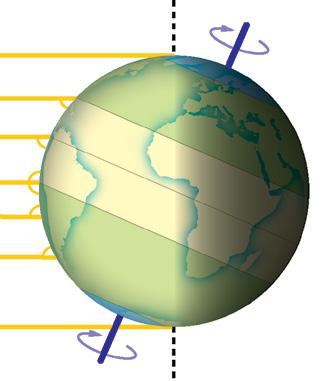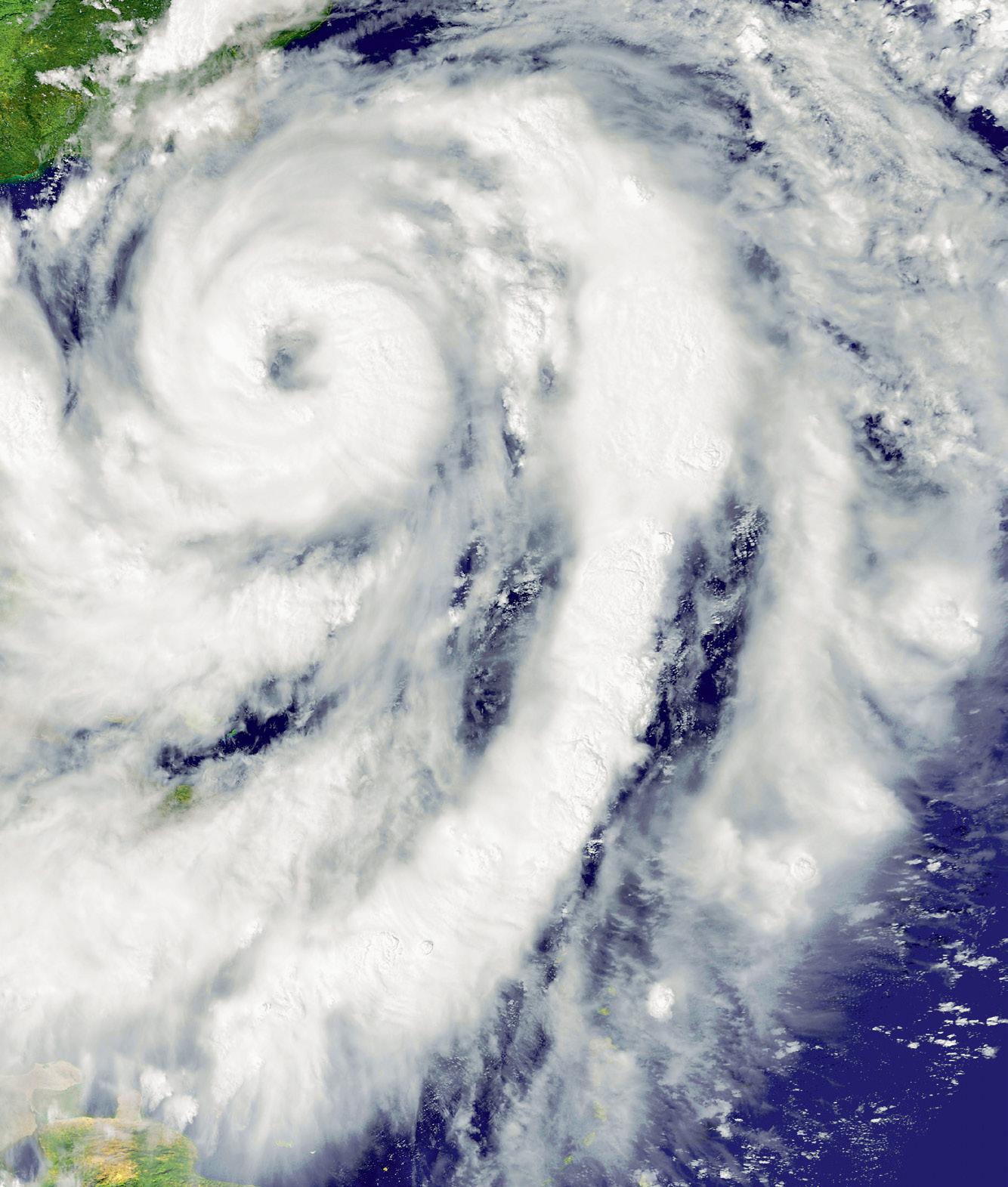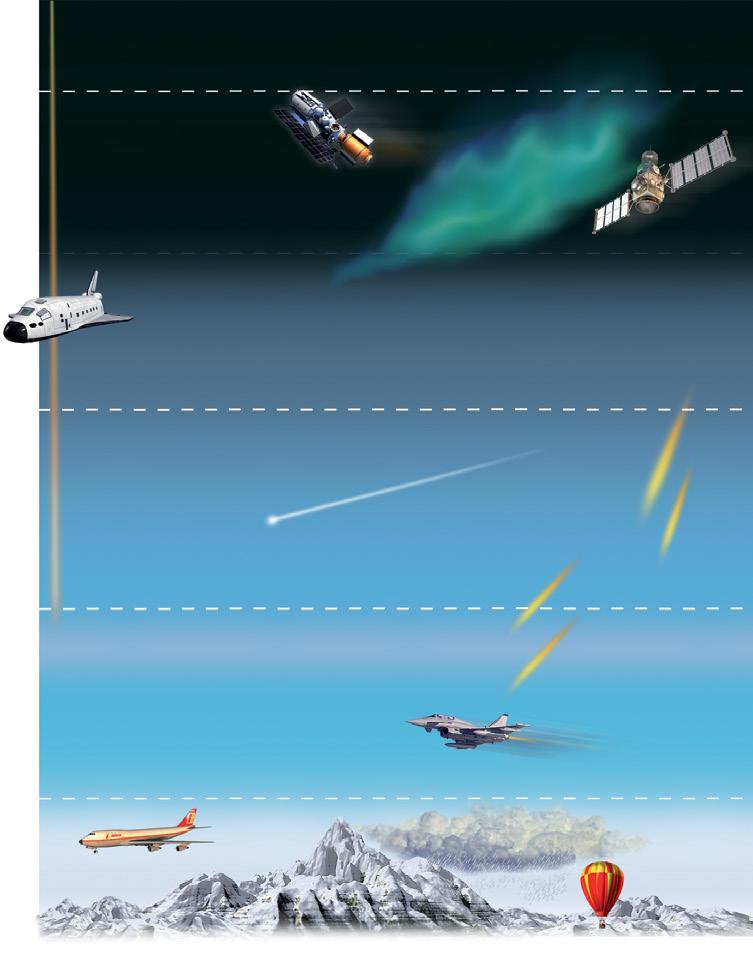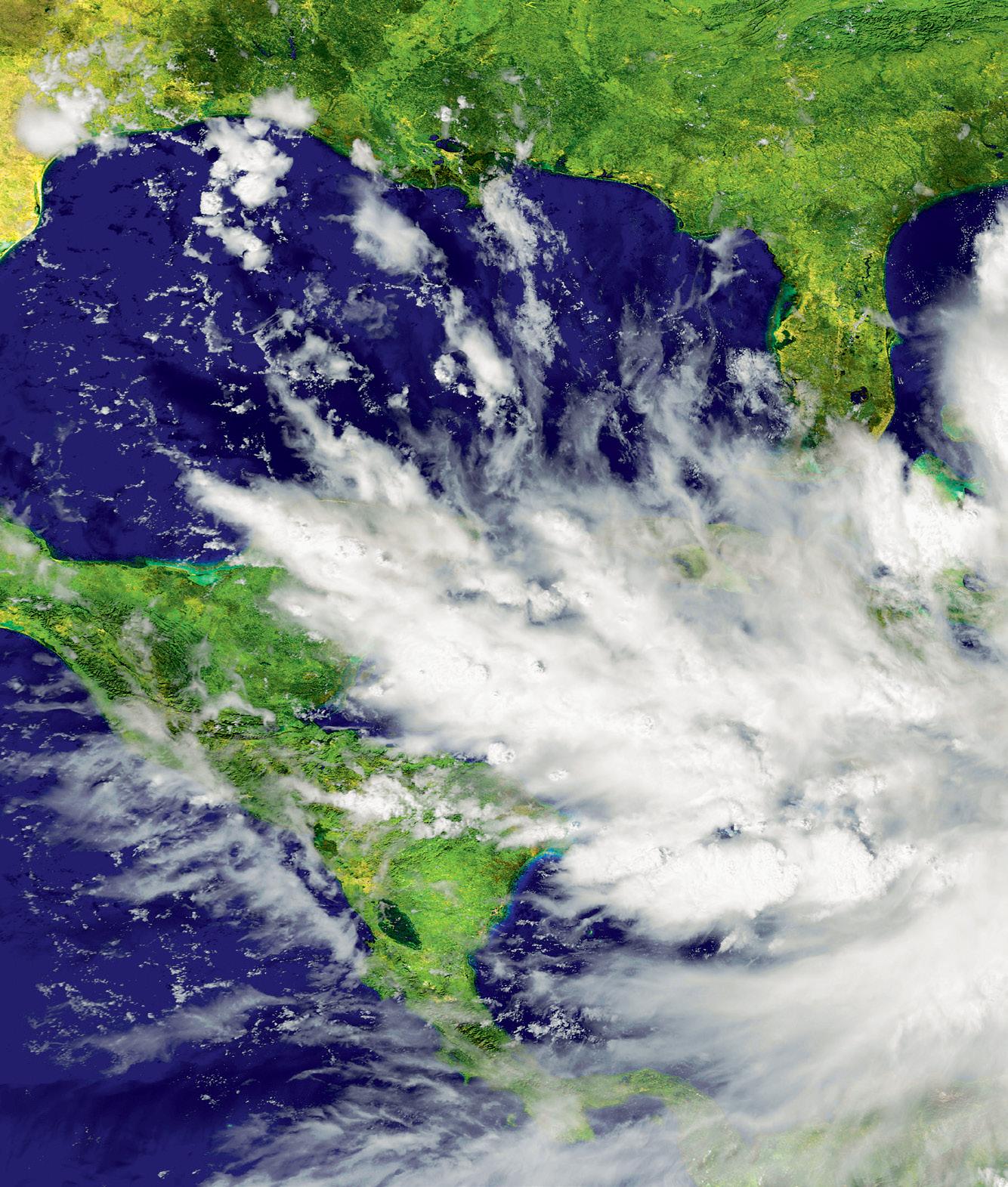1 THE ATMOSPHERE
The air and its gases
AND HOW IT CHANGES ã 1.1 The atmosphere, an essential layer The atmosphere is a layer of gases surrounding the Earth that is joined to it by the force of gravity. It is made up of air, which contains water vapour and a mixture of gases (including nitrogen, oxygen, ozone and carbon dioxide). The atmosphere is very important because it performs four functions that make life possible on our planet: it contains gases that are essential for living beings such as oxygen; it filters harmful solar radiation, like ultraviolet rays; it helps regulate the temperature on the planet; and it protects the Earth from the impact of meteorites.
1%
21%
78%
ã 1.2 The layers of the atmosphere The atmosphere goes from the surface of the Earth up to approximately 10 000 km high. This space is divided into five layers with different temperatures and characteristics. From the Earth’s surface outwards these layers are: the troposphere, the stratosphere, the mesosphere, the ionosphere and the exosphere. The troposphere is in the lowest layer of the Earth’s atmosphere. It extends from the surface of the Earth to an altitude of 12 km. Meteorological and climatic phenomena happen in the troposphere.
Nitrogen Oxygen Others (Carbon dioxide, water vapour, other gases)
ã 1.3 Atmospheric phenomena. Weather and climate
The atmosphere is constantly changing, which produces variations in the atmospheric weather and creates climates.
➜ Atmospheric weather is the state of the atmosphere over one place at a certain time. For example, the weather in Rome at 12 noon on October 31st of this year is cool and rainy. The weather changes, so the values obtained at 12 noon can be different from the values at 7 pm. This is because in the troposphere there are large air masses. They are pushed by the winds and move continuously over the surface of the Earth. Meteorology is the science that studies the weather and its changes. To do so, it measures the temperature, pressure and humidity of the air masses.
➜ Climate is the average state of the atmosphere over one place. It is determined by observing the succession of types of weather for at least thirty years. The conclusion determines that the climate in Rome is hot and dry in summer. Therefore, the climate is more stable than the weather. Climatology is the science that studies climate and its varieties. It measures and records the average temperature and the precipitation levels of a place throughout the year. 88
Skills progress Working with pictures
1 In the illustration, find information about the layers of the atmosphere: • What is the most abundant gas in the atmosphere and what percentage does it represent? • Calculate the thickness of each of the layers of the atmosphere. • Which is the coldest layer? And the hottest? • Which layer protects Earth from meteorites? And from harmful solar radiation? • In which layer do the northern lights appear?




